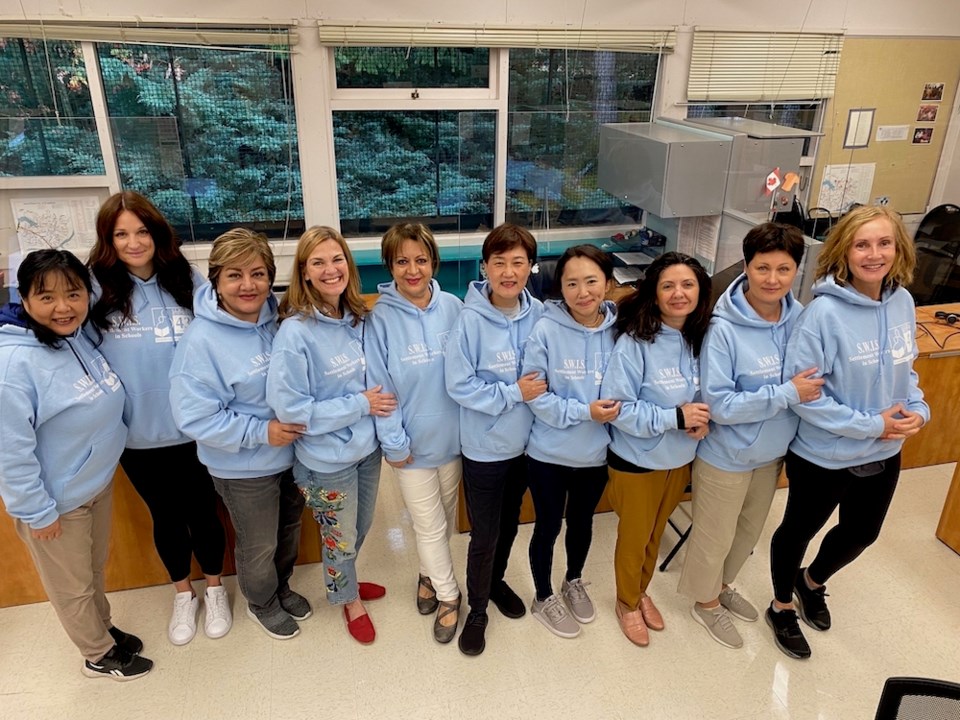Coquitlam's school district (SD43) is becoming a refuge for students fleeing Ukraine and host to immigrant families seeking a better life for themselves and their children.
"Unprecedented growth" in the number of provincially-funded international students whose parents are in Canada on work or study permits has boosted enrolment in schools in Coquitlam, Port Coquitlam and Port Moody.
Meanwhile, the need for support for English Language Learners (ELL) is growing.
SD43 trustees were told at Tuesday's (Nov. 29) board meeting that the federal government's immigration plan is behind the growth in newcomers.
"The federal government has increased study and work permits and that had a huge increase on our numbers," said assistant superintendent Gerald Shong.
Approximately 700 newcomer students — who are eligible for provincial funding because their parents work or study — registered for classes this fall.
The sharp increase in student numbers comes as the federal government announced that it is pursuing an ambitious plan to address the tight labour supply by increasing the number of workers for the next few years.
In SD43, there are 1,635 International Education Funding Eligible students attending classes in local schools. By comparison, the 2021-22 and 2020-21 school years had 933 and 977 students respectively.
Among the new arrivals are 150 students fleeing war-torn Ukraine, with more on the way.
Adults who arrive from Ukraine are provided with work permits for up to three years.
Many of the newcomer students are struggling with anxiety from relocation — or even war trauma — as they make their way through local schools with language challenges and other issues, school trustees were told.
Touching moments with newcomer families
However, a federally funded program called SWIS (Settlement Workers in Schools) provides eight case workers and one program assistant to support newcomer families.
Their caseloads very from 100 to 500 families per SWIS worker and languages spoken, including Korean, Russian, Farsi, Dari, Mandarin, Cantonese, Spanish, Portuguese and Arabic, according to SD43.
Two SWIS workers who talked about their jobs at the board meeting said that newcomer families can face multiple challenges when resettling in Canada.
Meeho Lee (Korean) and Yufen Hsiao (Chinese) talked about children struggling with mental health issues and parents facing isolation, with some leaving friends and family behind.
In a rare glimpse into the difficulties some immigrant students face, Hsiao said in China there is a stigma against mental health concerns or other disorders and families are reluctant to seek help.
“We don’t talk about it, we don’t think it exists," said Hsiao, acknowledging that she has to "walk along side" families for a long time before they see "that Canada is different" and will access resources for their children.
Lee described circumstances of some Korean families, where mothers and children arrive in Canada without the father who stays in Korea to work, and have to learn to navigate a new education system.
Feeling accepted comes with time for immigrant students
She said Korean families come to Canada for their children's education but often struggle with the differences at the same time their children struggle for acceptance and understanding.
"Newcomers are often isolated… they tend to shy away from engaging with local community [and] there are cultural gaps, different social situations and language barriers," said Lee.
At support groupa at Pinetree secondary, Heritage Woods and Port Moody Secondary School IB, parents came together to organize a garage sale, with money going back to scholarships at the school.
The effort provided "a sense of belonging" and a feeling of "giving back," Lee said.
In another group, parents and students talked about their struggles, including stress and anxiety.
"It was very empowering — and touching," Lee said.
School District 43 (SD43) expects to receive $8.8 million in additional grants to pay for more teachers and support staff to handle the increase in students, trustees were told.
According to the federal government, as many as 465,000 permanent residents will be permitted to arrive in 2023 to address labour market shortages in key areas, such as health care, skilled trades, manufacturing and technology.



